Posts Tagged landscaping
Lawn Treatment Tips to Prevent Crabgrass & Dandelions
Nothing ruins a lawn’s uniform, well-manicured appearance like dandelions and crabgrass. These invasive weeds make a lawn look shabby and poorly maintained — and when they set up shop, they can be a nightmare to remove. Thankfully, these lawn treatment tips will help you prevent crabgrass, dandelions and other unsightly weeds from taking residence in your yard.
Keep Your Grass Long
Crabgrass seeds in particular germinate with exposure to sunshine. One of the most useful lawn treatment tips you can follow is to set your lawnmower’s blades so they’re as far off the ground as possible. You’ll have to mow your lawn more often to keep it looking good, but the resulting tall, thick grass growth will shade the ground better, and keep crabgrass seeds from germinating.
Fertilize Your Yard
Make sure you fertilize your lawn at least once a year. This is one of many lawn treatment tips that you should be following, even if you don’t have a weed problem! It’ll help your lawn grow in thicker and stronger, which will allow your grass to compete better with any dandelions or crabgrass that tries to take root.
Reseed Your Lawn
Weeds typically grow in patchy areas of your lawn, where they have little competition from your grass. If you’re seeing worn spots in your yard, most lawn treatment tips advise you to reseed your lawn in fall. Make sure you tear out all existing weeds, or use herbicide on them, so that your grass can take root and thrive. Once the new grass is established, it’ll be able to deny any invading weeds the chance to take root.
Water Your Lawn Deeply
Most weeds thrive on infrequent, shallow watering. One of the most useful lawn treatment tips you can follow is to water your lawn seldom — on the order of once a week — but deeply. Your grass appreciates this better than your weeds do. It’ll give your lawn the chance to soak up all that delicious moisture, and build a strong root network that can resist invaders. As a bonus, that healthy root network will be more resistant to high temperatures!
Use a Pre-Emergent Herbicide
Many people may balk at applying herbicides to their lawn, so this is one of the lawn treatment tips that’s most useful if your lawn continues to suffer from weeds, after you’ve taken other options. Pre-emergent herbicides are highly specialized weed killers, so they won’t kill existing weeds effectively. Rather, they keep seeds from germinating, so they work best when applied in early spring or late autumn, and only when you’ve successfully followed other lawn treatment tips to remove crabgrass and dandelions from your yard. When you’re choosing a herbicide, always be sure to follow all instructions on the package carefully.
Removing noxious weeds like crabgrass and dandelions, when they’re established, can be a real pain. An ounce of prevention is worth a pound of cure, so follow these lawn treatment tips and put bothersome weeds out of your mind!
Gardening Advice from a Landscape Maintenance Company
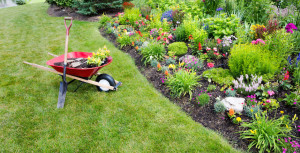 Most people expect three things from their landscape: for it to look good, for it to require little maintenance, and for that maintenance to be inexpensive.The reality is that to keep your garden looking green and healthy, you will have to invest a lot of time, money and effort. Serious gardening may not be easy if you have a busy life. However, with a little planning and the right advice, it is possible to reduce gardening costs while still having an aesthetically pleasing garden. In order to get the most out of your gardening time on the weekends, consider the following tips:
Most people expect three things from their landscape: for it to look good, for it to require little maintenance, and for that maintenance to be inexpensive.The reality is that to keep your garden looking green and healthy, you will have to invest a lot of time, money and effort. Serious gardening may not be easy if you have a busy life. However, with a little planning and the right advice, it is possible to reduce gardening costs while still having an aesthetically pleasing garden. In order to get the most out of your gardening time on the weekends, consider the following tips:
- Understand Your Garden
Before you decide to add anything new to your garden or to make any big changes, look at what is already there. Pay attention to the weather, as well as to the light and soil in your yard. Look at the types of plants that are thriving under the conditions present on your property. When you go shopping for new plants, look for ones that flourish under those same conditions. - Put in a Few Trees
Trees are an excellent addition to your property and can help to increase its value. Mature trees not only provide a degree of privacy for your home, they can provide protection for plants lower to the ground as well. Trees last for a long time and require relatively little maintenance. - Choose the Right Plants
If you are a busy person without much time for gardening, you may want to focus on low maintenance plants. It is important to remember that the meaning of a term like “low maintenance” can differ from person to person. Plants that are considered by others to need little maintenance may actually require more gardening time than you are able to invest. If you have limited time for gardening, consider hiring a professional to handle your landscape maintenance. With their help, you may be able to get plants that require more effort. - Take Out the Tough Weeds Prior to Planting
When you are putting in a new landscape, preparation makes all the difference. By carefully preparing the soil, you can substantially reduce the amount of time and effort that you spend gardening. Remove the top layer of sod in the location that you intend to use for your garden. Completely remove annual and perennial weeds from the area as well. Till the soil and let the sun dry out any remaining weeds. Give it a week before tilling again. - Choose Plants of the Right Size
Look at the tags on your plants to find out how large they will get. Avoid crowding your garden beds and pay attention to the plants’ growth tendencies rather than try to restrict them. - Pruning
Good gardening involves pruning your plants annually to maintain their health and to keep your garden looking neat.
Landscape and Garden Design Tips For New Homeowners
Landscape and garden design is top priority as you’re excited about your new home. You can’t wait to finish decorating and furnishing every space in your home, including your lawn and garden. However, when you first start considering what the perfect layout for your garden would be, the options and work involved can seem overwhelming. Fortunately, you can simplify the entire garden design process by understanding how it works. In order to get your landscape and garden design right, keep the following basic tips in mind:
Don’t Brainstorm Your Landscape and Garden Design Ideas in a Vacuum
One of the biggest mistakes you can make with garden design is to sit in an empty room and try to come up with ideas. Successfully designing a garden requires inspiration; for this, there is inspiration all around you. In particular, there are three sources that you should pull inspiration from:
Nature — Naturally beautiful landscapes allow you to see how garden life can flow on its own with the right setup
Professionals — Looking at beautifully laid out parks, checking out professionally landscaped homes, and consulting with a landscaper are all great sources for landscaping ideas
Your neighborhood — Walking around your area and adding features from your neighbors’ garden designs that you do like — and avoiding the features that you don’t like — can really help you develop your own design, especially since the homes in the area will have some similarities to your own
Think Function and Form for Your Design
You want to be able to enjoy your outdoor space as your own little garden oasis. For this, you need to consider both form and function (you can’t create a garden oasis feel without the right design, but you can’t enjoy your garden oasis if your design hasn’t left you with any room to relax in it).
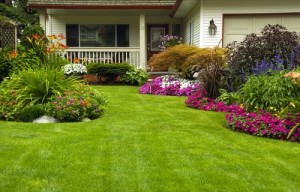
Create a Realistic Design Budget
Garden design budgets can vary drastically. If you approach your design haphazardly, you could find yourself turning your pockets inside out before the job is even half of the way done. On the other hand, you could end up missing on some outstanding garden design elements that you could easily afford if you approach the project cheaply with no real budget in mind. Avoid these types of issues by setting a realistic budget before you begin with your final plans. This way, you know what you can really afford to do. Also, because sudden expenses can occur, be sure to give your budget an extra 10%-20% emergency cushion.
Another issue to bear in mind is water savings and homeowners should set up a design that saves water and ultimately money. The state of California has laws in place in regards to water irrigation in order to protect and efficiently manage the county’s water supply.
Decide What You Can and Can’t Do On Your Own
Even if you have a green thumb, don’t simply assume that you can do it all. Installing certain fixtures, plants, etc into a garden the right way requires a team of professionals and the right equipment. Consult with a professional landscaper to discuss your options here.
Write Your Design Plans Down
Once you have all of your garden design plans in place, you need to make sure that you stick to them — and that you’re really going to like them. To this end, you should write everything down in two forms: prose and sketch. Writing everything you need down will keep your design plans in perspective with your budget and drawing a picture will give you a good depiction of how everything will actually look when you’re all done (the real thing doesn’t always match up with what’s in your head. If you can’t draw, then have a professional landscaper help you develop the image.
You’re Not Far From the Design of Your Dreams
Now that you know how to approach landscape and garden design, it’s time to get the process started. Reach out to us for a consultation as we’re here to help you get started.
Garden Design for Clay Soils
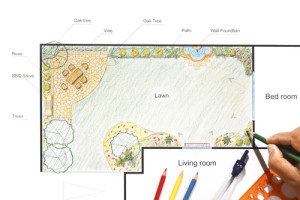 Clay soil is definitely an acquired taste for most gardeners, yet you might start swearing by clay soil once you hear some of the benefits listed below. First, though, what the heck is clay soil and how can it benefit your garden?
Clay soil is definitely an acquired taste for most gardeners, yet you might start swearing by clay soil once you hear some of the benefits listed below. First, though, what the heck is clay soil and how can it benefit your garden?
Clay Soil Vs. The Competition
Generally when you walk into a nursery, outdoors department or speak with a landscape maintenance company, you might be steered more towards silt soils or loam soils before clay. That’s because clay soil is composed of tiny plates or granules that can harden over time.
You’ve no doubt had the experience of plunking your shovel down into the ground, ready to get your garden going in the spring, and run up against clay. In spite of its hardness, though, clay soil is great for retaining moisture, nourishing your garden as well as retaining nutrients and fertilizers between individual clay particles.
Loam, relatedly, is a combination of clay, sand and silt and is very versatile, moldable and just easy for even inexperienced gardeners to work with.
Benefits of Clay
Part of the reason that loam soil is so moldable, to our main point, is that loam contains clay. The clay in the loam ensures that what you’re working with clumps into granules whereas the silt and clay components of loam help to retain moisture and nourish the plants in your garden.
Clay soil works wonderfully for annuals as well as perennial plants since the clay allows these plants to get a firm (and nourishing!) hold with their roots. The grip that perennials and annuals get with clay can withstand otherwise harsh humidity and temperature changes.
In short, clay’s fantastic as a garden design foundation since it provides a hearty root structure and allows plants to withstand harsh conditions. Moreover, you won’t need to water or fertilize as much with clay as with other soils. All good things.
Working with Clay Soil
Clay soil as a garden design foundation can accommodate a pretty wide range of shrubs, climbers, conifers and trees. Everything from popular conifers like ginkgo biloba and a deciduous evergreen like cotoneaster to rosa and fuchsia shrubs makes a great complement to clay soil.
To provide even more nutrients for these clay-compatible shrubs and conifers try adding a light mulch to your garden. Leafmold, composted bark and long manure work especially well with clay soil in terms of providing an easy-to-work-with mulch that does wonders for your plants.
Mulching Your Clay Foundation
When you actually get down to planting, mulching the plants up to three inches is a good idea for a few reasons.
Just a few inches down allows the right amount of moisture to hit your plants’ roots while tamping down weed growth and providing shielding from the elements.
One problem that people have with clay soil is that they sometimes overwater. Remember that clay soil retains water and moisture better than other garden foundations and, therefore, doesn’t need around-the-clock watering.
You’ll know that you’re doing too much watering when you notice a lot of the plants visibly retaining water and you notice globs of water on the clay surface the next day. These would both indicate that it’s time to cut back and let clay soil work its magic.
Creating the Perfect Garden
If you understand how clay’s small granules retain moisture and you know not to overwater, clay can offer a ton of benefits beyond more favored soil types.
You might consider planting eucalyptus trees, gorgeous flowering plants like bergenias and some of the conifers mentioned above for the perfect garden design. Contact Xeriscape today to get started.
Xeriscape Landscaping Ideas for Easy Gardening
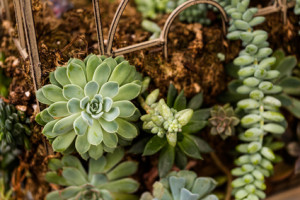 Xeriscape is a type of gardening that focuses on conserving water. You typically won’t see any lush green lawns; instead, xeriscape yards and gardens are full of local and drought-resistant plants, and typically involve creative uses of windbreaks and drip irrigation. They’re gaining popularity not just for their eco-friendliness, but because they’re very easy to maintain.
Xeriscape is a type of gardening that focuses on conserving water. You typically won’t see any lush green lawns; instead, xeriscape yards and gardens are full of local and drought-resistant plants, and typically involve creative uses of windbreaks and drip irrigation. They’re gaining popularity not just for their eco-friendliness, but because they’re very easy to maintain.
This school of gardening breaks a lot of the rules that many landscapers follow. It can be tricky to know where to get started, but here are a few ideas.
Research Xeriscape and Use Local Plants
We can’t advise you about what plants you should be using, because it’s particular to your region and your aesthetic tastes. Ideally, you want to rely as much as possible on rainfall, and the best way to do that is to use drought-resistant plants that are adapted to your area. Exotics are typically harder to maintain, and invasives often suck up water. An added benefit to choosing local plants is that local wildlife will seek your xeriscape garden out!
So head to your local library, check online, or go through a local greenhouse and ask questions of the staff there. Landscaping 101 applies here: be sure you’re choosing plants that will thrive in your soil’s pH, and with the different amount of sunshine your xeriscape gets. Remember to choose a variety of colors, and try to choose plants that will bloom over the course of the year rather than all at once.
Compost Before You Plant
After your plants are in the ground, it can be tricky to compost your xeriscape. Instead, add the compost while you’re prepping the soil for your plants. This doesn’t just make the soil richer — it also helps it retain moisture.
Permeable Paving
Asphalt, tile, or other paving surfaces catch water and cause it to puddle and eventually evaporate, where it’s lost. This “hardscaping” can also become very hot in the sun, which affects moisture absorbtion and can make your plants wilt. Using gravel, sand, or a comparable paving material on your paths lets water seep down into the soil to water your xeriscape plants.
Grade on a Curve!
Try adding a slight grade, or even terracing, to your xeriscape garden. Remember, it doesn’t help if the water puddles, or runs out to the street. You want the water to flow gently downhill, so that it trickles over the surface of the soil and is absorbed.
Use Mulch
Mulch heavily around your plants! Three to four inches is enough to keep the soil’s moisture in, and as the mulch’s bottom layers degrade they fertilize the soil. While gravel is another xeriscape option and it works great, some people find that it makes their gardens look drier and more like a desert, compared to how mulch looks.
Rainwater Harvesting and Clever Irrigation
Even with clever xeriscape techniques, you will still need to water your garden. This is particularly important for plants that are young or just getting settled, because they’re still building their root systems. Collect water to irrigate by hooking a rainwater barrel up to your gutter. Make sure you water during the cooler evening hours, and try using a soaker hose or an automated drip irrigation system. These saturate the soil, so as little as possible is lost.
5 Steps to Choose the Best Landscape Maintenance Services
 If you are looking for the best landscape maintenance service, finding it will take more effort than merely looking in the phone book. The unique nuances and needs of your property, as well as the niche of each company will go a long way in determining which landscape maintenance provider to choose.
If you are looking for the best landscape maintenance service, finding it will take more effort than merely looking in the phone book. The unique nuances and needs of your property, as well as the niche of each company will go a long way in determining which landscape maintenance provider to choose.
Don’t Get Hooked by a Landscape Maintenance Low Price
Some landscape maintenance services will submit a very low bid in an effort to win your job. However, these bids are often accompanied by low quality project results. Look for bid contractors who will use high quality materials and safe equipment at all times. The quality of the landscape maintenance service provider’s craftsmanship is always worth the higher cost.
Check Track Records
Do not hesitate to contact the prior customers, reviews and references of various maintenance services. Each should be willing to provide you with a reference list who can testify to the quality of the work. Try to find a customer who had a job performed within the past year at an equal or a greater value than your current job. This way, you will be able to make an informed comparison when deciding on which landscape maintenance service is the best for your property.
The Type of Landscape Maintenance Work
Each landscaping company has a specialty area. Some are good at any number of projects. The key is to find the one that has a history of installing or maintaining the area of your yard that needs attention. Communicate exactly the type of work that you want done and your budget limitations. This will help you narrow your search to find candidates who can handle the specific challenges involved in your nuanced yard. Keep in mind that some landscapers offer maintenance services only, so vet each company thoroughly before progressing to more detailed matters.
Qualifications
Make sure that each landscape maintenance service is properly insured so that you are not liable for accidents that occur on your property. Ask for valid proof of the insurance before work commences. Find out the professional affiliations that the companies belong to as well. If they are active in professional associations, they are more likely to stay abreast of industry trends. Then, find out of they are licensed. Those that are certified by the state will provide proper employee training and will be held to the highest legal standards.
Build a Criteria List
Contact each potential landscape maintenance service and ask them a series of questions. You can mark off whether each meets your specific criteria. The one with the lowest bids and the most check marks will be awarded the project. Your checklist should contain key requirements like a company that is properly certified, licensed and insured. Get a written contract that accounts for a project price, material list and quality guarantees before work starts. Also, be sure to ask each candidate’s references whether the companies were able to complete the projects within the originally estimated timeline. Once you have gathered all of the pertinent information, you can make an informed decision about which landscaping company to choose.
Landscape Service Niches
Each landscape maintenance service company tends to do at least one thing very well. Some do it so well that they develop a niche in the field. If you are looking for a company that handles yard maintenance, repair, irrigation and water saving landscapes, give us a call today.
Picking the Best Landscape Maintenance Services
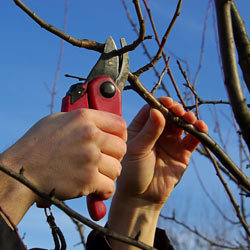 Landscape maintenance goes well beyond regular lawn care in ways that might surprise you. For starters, if you’ve ever wondered why local parks and upscale homes look so great year round, the reason is probably regular landscaping.
Landscape maintenance goes well beyond regular lawn care in ways that might surprise you. For starters, if you’ve ever wondered why local parks and upscale homes look so great year round, the reason is probably regular landscaping.
From pruning and lawn care to a reliable irrigation schedule and weed-reduction services, a landscape maintenance company remains an affordable way to turn heads and quickly increase your home’s curb appeal.
Myriad Benefits of Landscape Maintenance
Contracting out your landscape maintenance services, for instance, can increase your home’s resale value by over ten percent virtually overnight. A landscape maintenance company can also assist property managers lease space and offer a more professional face to the public.
A landscape maintenance company can work to expand on what’s already great about your home’s lawn and garden as well. Services like lawn edging, mulching and irrigation significantly enhance your home’s curb appeal and can give you more reasons to take daily pride in your home.
Pruning your home’s bushes and snipping overhanging branches are additional ways that a landscape maintenance company gives value back to homeowners. In short, a landscape maintenance company that can help you get your lawn, garden and walkway in shape is a win-win for you and your neighbors.
Unique Services Available to Homeowners
If you’re somewhat fuzzy on the nuts and bolts of irrigation, mulching and the right watering schedule for your home’s soil and climate, then you’re just like millions of homeowners from around the country.
A landscape maintenance company, fortunately, has decades of experience testing for proper pH levels, installing and/or maintaining sprinkler systems, and removing weeds or unsightly overgrowth from your yard.
If a landscape maintenance company determines, for example, that your pH levels are out of whack, then a lime treatment can be used to get your lawn back on its feet.
This is all a huge boon for homeowners looking for a little extra time on the weekends as well as property managers who want to spend less time worrying and more time leasing space.
Interestingly, some studies even show that properly placed trees and plants can lower your HVAC costs by as much as one-fifth. This might seem shocking until you consider the heat gain during the hottest months – or the heating costs squandered to poor ventilation – due to a lack of shade around your home or commercial property.
From relatively simple jobs like mowing and mulching to larger projects like aeration and irrigation, a full-service landscape maintenance company is truly a one-stop-shop for all of your home’s landscaping needs.
Hiring a Landscape Maintenance Company
Although you can probably find dozens of companies with mowers and leaf blowers in your area willing to provide simple services, a landscape maintenance company can provide more sophisticated services (e.g., irrigation) that bring experience and professional know-how to bear.
Many states even require that landscape maintenance companies have licenses before offering their services to the public. This coupled with the fact that a full-service landscape maintenance company can help with pest and weed control, sprinkler systems and pH detection makes this an easy call.
To reiterate, a landscape maintenance company can help homeowners and property managers in crucial ways – improving curb appeal, enhancing your home’s energy efficiency, and eliminating pests and weeds.
If you’ve always wanted a lusher lawn, contact the professionals at Xeriscape today for more information about a host of maintenance, repair and irrigation services.
Go Native, Save Water: Xeriscape Gardening
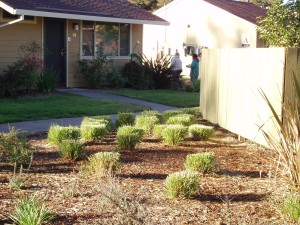 The information age has brought with it a flood a varying techniques in the fields of landscaping, gardening and ecological design. In keeping with the sustainable nature of the best of them, xeriscape gardening is defined by its optimal use of a minimal amount of water. This approach to gardening has been developed in the arid regions in the world, chiefly in the American mid-west, as a natural response to the climate. Xeriscape is most effective when the need for supplemental irrigation is eliminated and the design of the garden promotes symbiotic relationships that provide benefits. Environmental conservancy is xeriscape gardening’s top priority, but aesthetic design has received as much consideration. At its best, xeriscape becomes a melding of both utility and beauty.
The information age has brought with it a flood a varying techniques in the fields of landscaping, gardening and ecological design. In keeping with the sustainable nature of the best of them, xeriscape gardening is defined by its optimal use of a minimal amount of water. This approach to gardening has been developed in the arid regions in the world, chiefly in the American mid-west, as a natural response to the climate. Xeriscape is most effective when the need for supplemental irrigation is eliminated and the design of the garden promotes symbiotic relationships that provide benefits. Environmental conservancy is xeriscape gardening’s top priority, but aesthetic design has received as much consideration. At its best, xeriscape becomes a melding of both utility and beauty.
The Principles of Xeriscape
As conceived by Denver Water, xeriscape gardening’s most revered proponent, these seven guiding principles provide the foundation for all considerations within the field. Each principle holds an entire discipline within itself, which means that there is always more to learn and improve upon in this field.
- Planning and Design are the cornerstones of effective gardening, which requires careful attention to your specific environment.
- Soil Management is about knowing what nutrients your selected plants need and what nutrients are available in the soil. Composting is a great way to reinvigorate malnourished soil.
- Plant Selection is an integral part of xeriscape gardening. Thousands of species exist in arid conditions, each with benefits and beauty to offer.
- Turf Minimalism is crucial because the water needs of most grass lawns makes them impractical for dry climates.
- Diligent Irrigation may be the reason you’re interested in xeriscape gardening to begin with. Water is an invaluable resource and appropriate use of it is essential to environmental conservancy.
- Mulch can be composed of several materials such as leaves, wood chips, pine needles and bark. It is spread over the surface of the soil to help with water retention, fertility, prevention of erosion, and reduction of weed growth.
- Maintenance in the form of weed pulling, mulching, and general upkeep should be combined with constant observation to check if your garden layout is working to its full potential.
The Benefits of Xeriscape
- Reduced Water Consumption is both the key aspect of xeriscape gardening and a great benefit of it. It means using less water and making better use of it. Not only will this save you money, but you will be helping your community and environment as well. Re-appropriating rainwater can help you prevent evaporation and runoff, and your garden’s layout can be optimized for better use of it.
- Less Maintenance is required from a xeriscape garden. Much less fertilizer is used, which helps urban runoff pollution, lawn mowing becomes nigh unnecessary, and simple irrigation systems can handle all of your watering needs.
- Pest Control is an added benefit of a really well thought out garden layout. Certain xeriscape friendly plants ward off insects, while prickly cacti do the same for intrusive mammals. Plant selection also enables you to create a sanctuary for desirable birds and insects.
- Property Values Rise when you drought-proof the terrain around your home. Likewise, the design opportunities available to xeriscape can make for some exquisite gardens.
There are an abundance of tips and tricks available for do-it-yourself xeriscape gardening, but expert consideration reaps the true benefits of the art form. Xeriscape specialists develop an uncanny ability to read an environment and discern its possibilities. With a little help, and dedication to the sustainability principles of xeriscape you could be looking at a lower water and power bill, a productive and efficient garden, and a beautiful area in which to relax.
Sprinkler System Design That Saves You Money
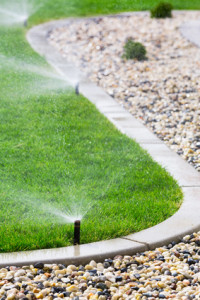 When it comes to keeping your landscaping looking lush and healthy, your sprinkler system design could make all the difference. If your plants are getting too much water you may encounter problems such as mold, rotting, and even yellowing of your plants. Likewise, if your plants are not getting enough water, they can quickly turn yellow and brown, dying back and leaving you with large dead patches in your garden.
When it comes to keeping your landscaping looking lush and healthy, your sprinkler system design could make all the difference. If your plants are getting too much water you may encounter problems such as mold, rotting, and even yellowing of your plants. Likewise, if your plants are not getting enough water, they can quickly turn yellow and brown, dying back and leaving you with large dead patches in your garden.
Sprinkler system design needs to meet all of your plants different water needs. This can be tricky, especially if you have different types of annuals, perennials, shrubs, and trees, grouped together throughout your garden. A small shrub may need water once a week, whilst the small annual flowers you have growing around the shrub may need to be watered daily, finding that balance can be hard.
Why Hire a Gardener or Landscape Team for Your Sprinkler System Design
There are many complexities when it comes to the best sprinkler system design for your garden, hiring an experienced gardener will ensure that your garden is having its exact watering needs met. Here are some of the things a good gardener will look for when it comes to sprinkler systems.
- When it comes to sprinklers there are many different types, choosing the right sprinkler head can make sure that your garden is getting the right amount of water, protecting your plants from too much or too little water. An experienced gardener or landscape expert will know which sprinkler head to use, in which areas of your garden.
- Water pressure needs to be considered when it comes to a sprinkler system, your water pressure should be evaluated and upgrades to the system should be made to account for either a lack of pressure, or too much pressure.
- Pipes will need to be placed throughout your lawn and garden. By having a professional design the pipe layout and lay the pipes, you can be sure that your current garden and lawn will be protected. You will also have peace of mind knowing that your systems pipe design will help you reduce your water usage, whilst providing your garden with the water it needs.
- When it comes to your sprinkler system design the placement of each sprinkler head is important. As previously mentioned there will be areas in your garden that need less water, while other plants or areas may need a lot of water on a daily basis. By accounting for run off, sprinkler direction, and which plants need more or less watering, an experienced gardener can place your sprinkler heads in the right position to benefit all plants in your garden.
- If you would like your sprinkler system design to be as low maintenance as possible, you may want a system that is automated. Hiring a gardener to design, install, and set up your system will make sure that your sprinkler system is running at a time that gives your garden the best chance of soaking up the water. This will make sure that you are not losing valuable water to the heat of the day, or causing disease to spread through your garden.
Contact Us Today for Your Sprinkler System Design
If you have been considering sprinkler system design for your home or business, contact our landscape maintenance company today. Our team of garden and landscape experts can help you get the best sprinkler system design, keeping your garden and landscape healthy no matter the season.
Front Yard Flower Bed Ideas – DK Landscaping
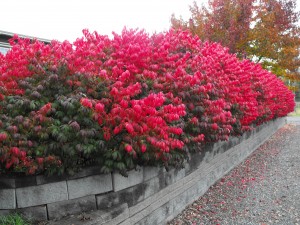 Want to make your home look calm, inviting, and happy? Add flower beds to your property for constant color. Use the beds to delineate property or break up bland expanses of lawn grass and dirt. Finding flower bed ideas is simple, but you should be sure of what you need and why. There are so many possible flower bed ideas that you can get easily bogged down in details if you start to look for designs without taking issues like drought and level of care into consideration. Pinpoint non-negotiable issues like those first to make designing your front yard a lot more efficient.
Want to make your home look calm, inviting, and happy? Add flower beds to your property for constant color. Use the beds to delineate property or break up bland expanses of lawn grass and dirt. Finding flower bed ideas is simple, but you should be sure of what you need and why. There are so many possible flower bed ideas that you can get easily bogged down in details if you start to look for designs without taking issues like drought and level of care into consideration. Pinpoint non-negotiable issues like those first to make designing your front yard a lot more efficient.
Drought-Proof Flower Bed Ideas
Drought is probably going to be one of your main considerations when looking at flower bed ideas. Many areas of the country are experiencing water shortages, and anything you plant has to be able to deal with a lack of abundant water. That doesn’t mean you have to plant cacti — just look for cultivars of flowers that have been bred to be less water-needy. Native flowers are always a wonderful choice in this case as they are already somewhat adapted to their region’s fluctuating water supplies. Plant breeders have been working on drought- and disease-resistant cultivars of all sorts of plants for years, and it’s become easier to find these in garden centers and from landscaping companies when looking at flower bed ideas.
Easy Care Flower Bed Ideas
Ease of care is another big consideration for flower bed ideas. Even if you have a landscaping company taking care of most of your garden, you’ll still have to do some minor care yourself. If you don’t feel up to that, you’ll want flower varieties that can handle benign neglect. Again, native flowers tend to be a little better for this, though there are easy-care species from all over the country if you’d like more variety for your flower bed ideas.
Location Ideas For Your Flower Bed
Now take a look at location to further refine your flower bed ideas. Flower beds that will be near the street need to be able to handle road salt spray, for example, if your area tends to have occasional snowfall in spring or fall. That’s not so much of a problem with annuals, as you’d be removing them anyway, but if can be for perennial or biennial flowers.
Flower bed ideas for spaces near fences can have species of varying heights, so those plants nearer the fence should be taller. The shorter flowers near the edge of the bed may need to be shade-tolerant if the bed is positioned where the fence or taller plants might block a lot of the sunlight.
Reduce Insects
Flowers planted next to the house need to be pest-resistant if possible. While it is impossible to guarantee that a flower will never attract a bug, if you have flowers that tend to attract pests, those pests could get into your house. Ask your garden center or landscaping company to show you flowers that have a reputation for repelling insects, too, such as marigolds, petunias, and nasturtiums. As you come up with ideas for other areas of your yard, you can work a few of these plants in so that you can reduce the number of pests you have to deal with overall. Start talking to landscape design companies about flower bed ideas and species that fit what you need for your yard’s environment, and you’ll have a beautiful yard in no time.






